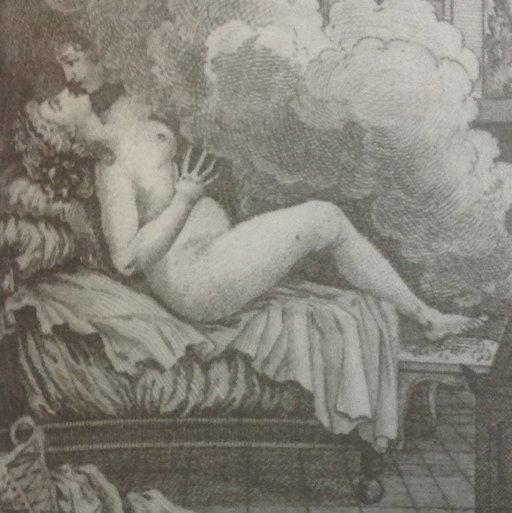The Sylph As A Lover

Here’s an interesting blog post by Elena Sorochina on the notion of the sylph as lover in 18th-century French erotic literature:
The literary function of the sylph appears to be closely linked to the malleable property of its elemental body composed of the ‘most delicate particles of air’ (Villars 1987:13). Its supernatural powers like shapeshifting, flight, invisibility and ability to magically dispense rare gifts and refined pleasures make it a unique tool for the exploration of a greater diversity of characters, themes and motifs. For example, an ideal, tireless lover who can take on the shape of a music teacher, a handsome young valet, a live doll of perfect beauty or even of a favourite pet. As we see in this example, the sylph character acts as a platform for the exploration of sexual relationships of diverse natures and with figures with whom such ties are forbidden within the framework of a traditional seduction narrative.
…
In the libertine (and essentially pornographic) convent novel by André de Nerciat entitled Eleanor or the Happy Person, the atomised and ‘airy’ nature of the sylph is used to its full potential to produce a particularly detailed description of sexual intercourse with a sylph. This depiction is extremely important because it offers an insight into the difference between a sylph and a human lover, thus highlighting the advantages of the supernatural in an erotic context. For instance, unlike with a human lover, the female protagonist, Eléonore, suffers no pain as she losses her virginity due to the sylph’s atomised body: ‘tightening and expanding the shape of his body at will, he penetrated inside her without difficulty or pain’ (Nerciat, 1800:22).
The sylph image at the top of this post is from an image gallery accompanying the linked blog post; the caption is “Illustration to Les Veillées du couvent, ou Le Noviciat d’amour by Mercier de Compiègne, [1793].”
Similar Sex Blogging:
Shorter URL for sharing: http://www.erosblog.com/?p=20528







